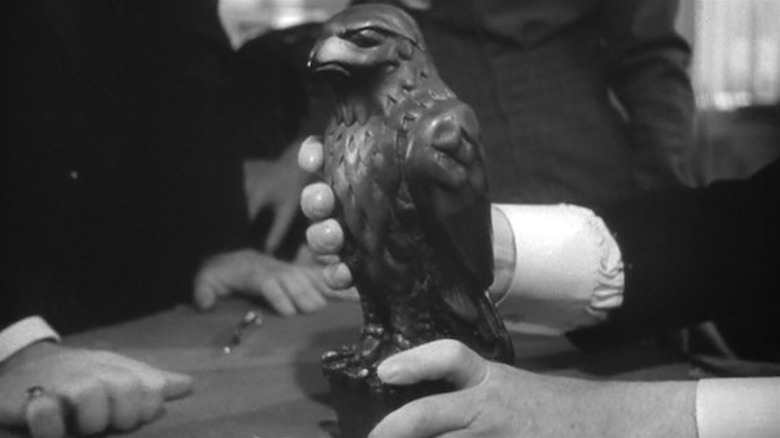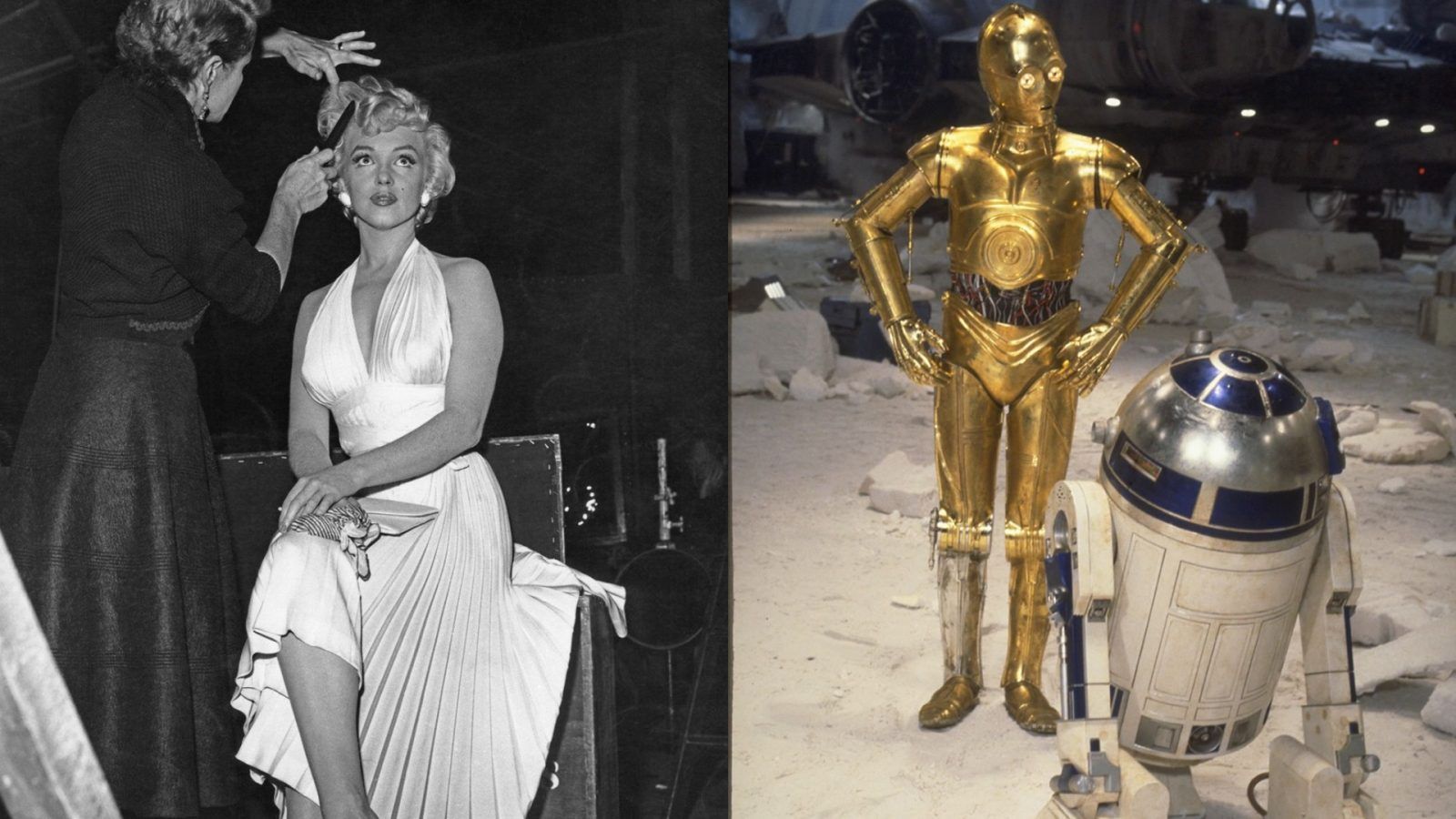
The cinematic universe, with all its grandeur and spectacle, often relies on the most mundane, or at times, even the most baffling physical objects to achieve its magic. We, as an audience, are accustomed to the sleight of hand, the CGI wizardry, and the suspension of disbelief that transports us to alien worlds or historical epics. Yet, beneath the veneer of digital perfection and careful choreography, lies a fascinating, often absurd, reality: the movie prop. These aren’t just background dressing; they are tangible fragments of cinematic history, each with a story far stranger than their on-screen utility might suggest.
Indeed, the very notion of a “useless” prop seems a contradiction. If it’s on screen, it serves a purpose, however fleeting. But what if that purpose was fraught with difficulty, controversy, or an afterlife so bizarre it overshadows its original role? What if a prop, designed for a single scene, became a cultural touchstone, a museum exhibit, or worse, a stolen artifact or even a garbage receptacle? The journey of these objects from mere set dressing to legendary status is a testament not just to their inherent design, but to the collective imagination and attachment we form with the stories they inhabit.
This isn’t merely a nostalgic trip down memory lane; it’s an analytical dissection of the curious economics, the unforeseen cultural impact, and the sheer audacity of certain objects within the filmmaking process. From items that proved more troublesome than helpful during production to those whose true value was only recognized decades after their initial “use,” we’re peeling back the layers to understand why these seemingly useless, or at least profoundly problematic, artifacts continue to exist, to captivate, and to command fortunes long after the credits have rolled. Prepare for a deep dive into the strange, often ironic, enduring lives of cinema’s most peculiar material assets.

1. **The Maltese Falcon Statue**The Maltese Falcon, an icon of film noir, is often thought of as a symbol of elusive desire and greed. The prop itself, a mysterious black bird, was not some lightweight, easily manipulated piece of art. It was “cast in lead and weighed over 45 pounds,” making it genuinely difficult for actors to handle convincingly, arguably rendering it “useless” in its capacity to be gracefully integrated into scenes. This physical unwieldiness forced a certain gravitas, or perhaps exasperation, into the performances, blurring the line between actor struggling with prop and character struggling with obsession.
Warner Bros. recognized the significance of the prop, commissioning multiple versions to ensure continuity and provide backups. However, the story of one original prop takes a turn worthy of a noir plot itself: it “disappeared from the studio lot and remained missing for decades,” a cinematic ghost. Its absence rendered it entirely “useless” to film history for that period, a lost piece of a cinematic puzzle.
When it finally surfaced at auction, its “usefulness” transformed from narrative device to invaluable artifact, “selling for over $4 million,” making it “one of the most expensive movie props ever sold.” This astronomical sum means its monetary value now far surpasses its on-screen narrative function. The initial difficulty it presented to actors pales in comparison to its legendary status and staggering market price, proving that sometimes, a prop’s most significant role begins long after production wraps, existing as a beacon for collectors and film historians.

2. **E.T.’s Animatronic Body**In an era when rudimentary computer effects were nascent, Steven Spielberg made a steadfast, almost stubbornly analog, decision for *E.T. the Extra-Terrestrial*. He “insisted on creating a fully functional animatronic alien rather than relying on costumes or early computer effects.” This commitment to practical effects, while lauded for its realism, pushed the boundaries of what a physical prop could be, almost to the point of “useless” complexity for what might otherwise have been a simple puppet.
The E.T. puppet was less a singular prop and more a sophisticated biomechanical organism. It “required a team of operators working cables and radio controls from underneath the set” to bring it to life. Its realistic movements and nuanced expressions were a marvel of “actual mechanical engineering,” demanding precision and coordination. Some scenes were so intricate that they necessitated “up to eight puppeteers working simultaneously” a logistical ballet behind the scenes.
This elaborate construction meant that E.T.’s “body” was anything but simple; it was a character brought to life through immense human effort and intricate mechanics. While perhaps “useless” in its sheer burden compared to a simpler costume, this complex animatronic still exists as a monument to practical effects mastery. Its continued existence, whether in archives or private collections, reminds us of a filmmaking philosophy that prioritized tangible interaction and the magic that could be conjured from gears, wires, and human ingenuity.

3. **Dead Animals as Props**Extending the theme of unsettling realism, the use of dead animals as props pushes the boundaries of cinematic authenticity even further. This practice, aiming for a degree of “realism” that might seem shocking today, was “surprisingly common in filmmaking.” The rationale was simple: productions sought to avoid the “uselessness” of replicas by using actual creatures that had already died of natural causes.
The context highlights a pragmatic, if ethically thorny, approach: productions “sustainably sourcing creatures that had already died of natural causes rather than creating replicas.” This wasn’t about harming animals for art, but rather about utilizing existing deceased specimens to achieve “maximum authenticity” in their scenes. It speaks to a bygone era of moviemaking where the pursuit of visual truth often superseded modern sensibilities regarding prop creation and animal welfare.
To acquire these specimens, productions would collaborate “with veterinary schools, zoos, and natural history museums.” This network underscores the systematic nature of the practice, indicating it wasn’t an isolated incident but a known method of prop acquisition. The continued existence of such practices in film history, though phased out, serves as a stark reminder of the lengths to which filmmakers have gone for realism, and how the definition of a “useful” prop can sometimes border on the profoundly uncomfortable.

4. **Giant Mechanical Shark (“Bruce”)**Before *Jaws* became synonymous with suspense, it was almost famous for its malfunctioning mechanical shark. Affectionately nicknamed “Bruce” by the crew, this prop was an impressive feat of 1970s engineering, but also a monumental headache. Its constant breakdowns rendered it “useless” for significant portions of filming, forcing director Steven Spielberg to famously work around its limitations, inadvertently creating the film’s iconic unseen menace.
The three shark models deployed during filming were designed to be “fully functional, with hydraulic jaws that could actually bite through boats and realistic swimming movements.” This ambitious mechanical design, while a testament to the era’s ingenuity, came at an exorbitant cost, with “Each shark cost over $3 million in today’s money.” Such a massive investment for a prop that frequently failed underscores the fine line between ambitious utility and frustrating impracticality.
Operating these aquatic behemoths required “a dedicated crew of marine engineers”—a specialized team solely focused on making the “useless” beast perform. Despite its temperamental nature and the substantial challenges it posed, the giant mechanical shark ultimately still exists, if only in legend and a few preserved pieces. Its legacy isn’t just about its on-screen terror, but about its off-screen struggle, proving that a problematic prop can become just as iconic as a perfectly functioning one, a testament to the perseverance—and sometimes exasperation—of moviemaking.

5. **The Ruby Slippers from *The Wizard of Oz* (Stolen Context)**Dorothy’s magical ruby slippers, one of cinema’s most cherished and recognizable props, embody a fascinating narrative of supposed “uselessness” and unexpected resilience. Far from being crafted from actual rubies, these were “actual hand-sewn slippers covered in genuine sequins, not the rubies that many people imagine.” This initial discrepancy in popular perception points to a subtle form of material “uselessness” compared to the grandeur many imagine, yet their cultural impact is immeasurable. “Multiple pairs were created,” highlighting their production value.
However, the story of these slippers takes a dramatic turn into real-world crime. “In October 2023, 76-year-old Terry Jon Martin pleaded guilty to the theft of a major artwork.” He confessed “that he used a hammer to smash both the museum door and the slippers’ display case to gain access.” His motive reveals a profound misjudgment of the prop’s true nature: “he believed the slippers contained real rubies, and his intention was to remove and sell them.” This belief in a “useful” hidden value, rooted in a fundamental misunderstanding, led to their temporary disappearance and effective “uselessness” to public display.
Before Martin could realize his ill-gotten gains, “he discovered that the ‘rubies’ were not real, so he decided to get rid of the slippers altogether.” The irony of their perceived “uselessness” when stripped of their imagined precious stones is striking. Despite being discarded, their inherent cultural value ensured their recovery. In March 2024, “the FBI returned the ruby slippers to their owner, Michael Shaw, in a private ceremony,” ensuring this iconic, albeit not ruby-encrusted, prop continues to exist and captivate, its story now etched with a bizarre tale of theft and mistaken identity.

6. **The Death Star from *Star Wars: A New Hope***The Death Star, the ultimate weapon of galactic destruction, is a prop with an unexpectedly mundane and almost comically “useless” afterlife. Lucasfilm initially “informed him that the prop had been destroyed during filming,” implying its practical end after serving its explosive on-screen purpose. Its theatrical destruction marked the culmination of its cinematic utility, theoretically rendering it completely useless.
However, reality, or perhaps the universe’s strange sense of irony, had other plans for this iconic piece of cosmic architecture. A sharp-eyed fan, Franklin, stumbled upon a “mysterious gray item” in an antique store. After comparing notes with *A New Hope*, he realized the store owners had previously owned a storage facility for movie studios and had “wisely decided to save the Star Wars props” when shutting down. The Death Star, presumed destroyed, had merely gone into an unglamorous, unceremonious hibernation, its immediate “use” forgotten.
The saga of the Death Star prop took an even more peculiar turn when Franklin couldn’t afford to buy it. He later discovered it had been “sold to a short-lived country and western musical show, Star World.” When he finally arranged a meeting to purchase the prop, “the iconic piece of cinematic history was being used as a trashcan.” From galactic superweapon to literal garbage bin – a profound statement on practical “uselessness.” Yet, it was authentic. Franklin purchased it, and since then, the prop “has undergone major restoration efforts and has been showcased at museums,” proving that even the most “useless” of afterlives can’t dim the shine of a true cinematic legend, ensuring its continued, albeit rehabilitated, existence.




